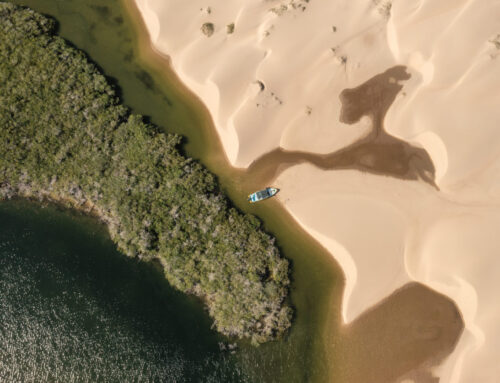MarVivo has deployed eDNA technology to access and monitor biodiversity, and discovered some hidden secrets within Magdalena Bay
 Environmental DNA (eDNA) analysis has emerged as a valuable tool for assessing marine biodiversity. By extracting DNA from water samples, scientists can amplify and sequence specific genetic markers to identify the organisms that have left their genetic material behind. This method can provide a comprehensive picture of the species composition, including those that are rare, cryptic, or difficult to observe directly. This non-invasive approach is especially valuable for fragile or sensitive organisms, such as marine mammals, whose populations need to be monitored without causing stress or harm.
Environmental DNA (eDNA) analysis has emerged as a valuable tool for assessing marine biodiversity. By extracting DNA from water samples, scientists can amplify and sequence specific genetic markers to identify the organisms that have left their genetic material behind. This method can provide a comprehensive picture of the species composition, including those that are rare, cryptic, or difficult to observe directly. This non-invasive approach is especially valuable for fragile or sensitive organisms, such as marine mammals, whose populations need to be monitored without causing stress or harm.
MarVivo deployed eDNA technology in our baseline assessment of Magdalena Bay. This data will allow for continuous monitoring to provide insights into ecological processes, connectivity, and potential impacts of human activities on marine biodiversity.
 MarVivo’s sample sites were designed to sample at pristine “reference” and “impacted” sites so we can detect changes in species composition. In addition, eDNA can act as an early warning detection system for invasive species before they become established or cause significant ecological and economic damage. Results will be highlighted in our biodiversity monitoring reports after project verification.
MarVivo’s sample sites were designed to sample at pristine “reference” and “impacted” sites so we can detect changes in species composition. In addition, eDNA can act as an early warning detection system for invasive species before they become established or cause significant ecological and economic damage. Results will be highlighted in our biodiversity monitoring reports after project verification.
Over the next few years, we will begin to train local fishers on how to collect eDNA samples in the field, to create ownership of the project and the community data.
Look out for our biodiversity report!
 eDNA samples are collected at 5 sites around Magdalena-Almejas Bay. At each site a water sample and sediment sample are collected and sent to NatureMetrics laboratory from eDNA analysis. Results will identify species, and their relative abundances indicated through the proportion of specific DNA fragments (circles).
eDNA samples are collected at 5 sites around Magdalena-Almejas Bay. At each site a water sample and sediment sample are collected and sent to NatureMetrics laboratory from eDNA analysis. Results will identify species, and their relative abundances indicated through the proportion of specific DNA fragments (circles).
Share This Story, Choose Your Platform:
About The Author:
Tom Sparke
Related Posts

